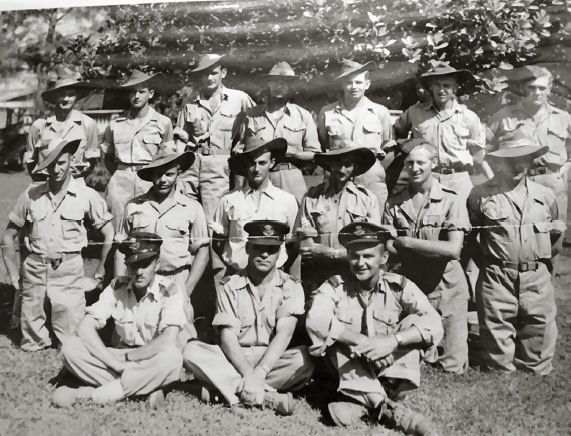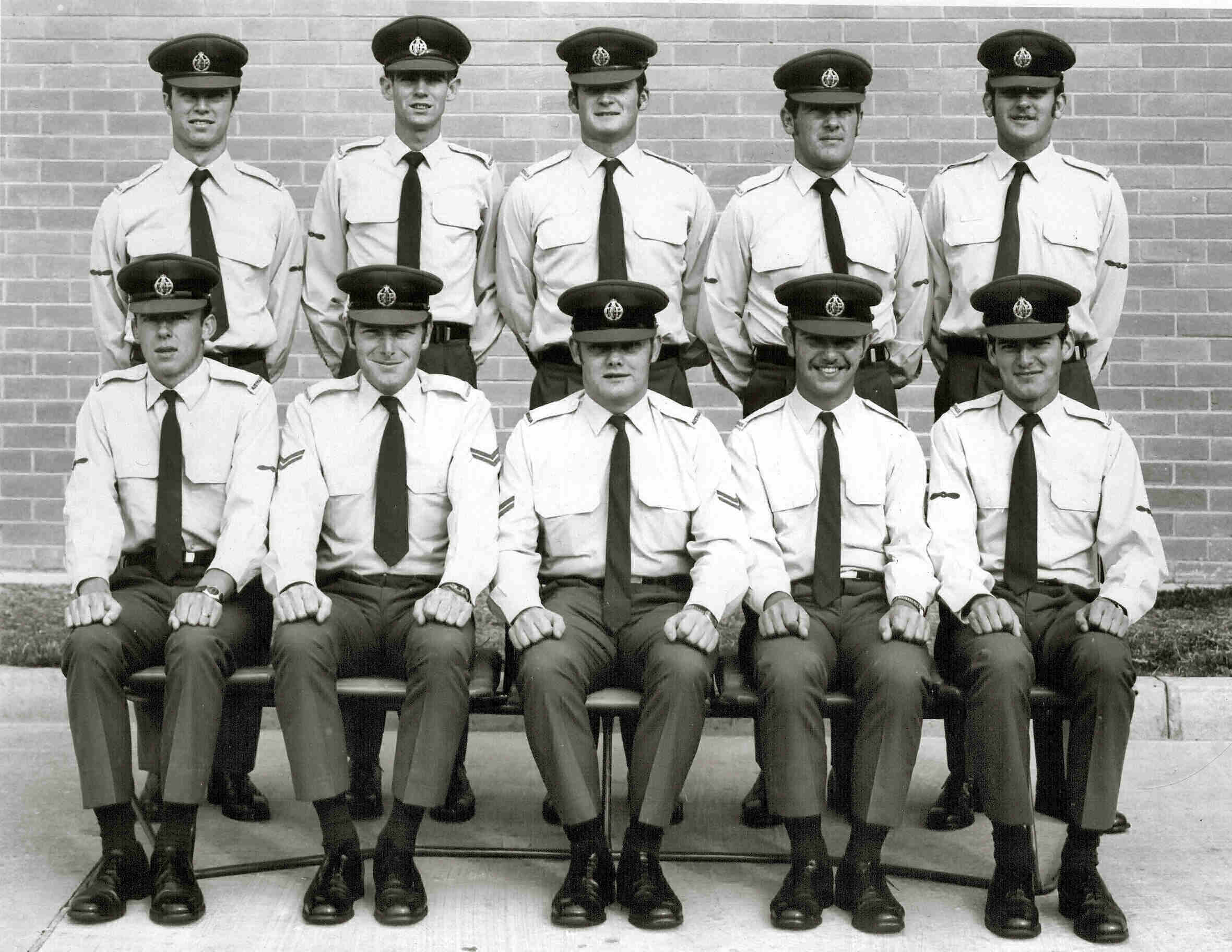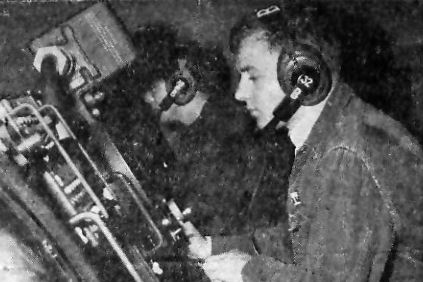|
|
|
Privacy Policy | Editorial Policy | Join the Association | List of Members | Contact us | Index | Links | Print this page |
|
|
Page 3 Girl.
Our page 3 girl this issue is the lovely Jeanette Kiorgaard. |
|
|
|
|
|
Jeanette was spotted at the Djinnang reunion in Brisbane back in May.
Jeannette joined the RAAF back in 1962, and was posted to Frognall and
trained on the job. She was married in 1965, and because of the stupid
The photo at right was taken back in 1963, at the Service Section at 3Telo at Frognall, with her is Alan Wise. Both are checking the messages for any 'hits' or garbled sections to enable then to complete the service request from the operators in the RAAF, Army or Navy Communications Centres and send a rerun.
Jeanette did not attend Radschool at Laverton as she had previously worked as a clerk typist in the Brisbane Parliamentary Library, instead, she went straight from Recruit Course at Point Cook to Frognall where she was the 'guinea pig' for direct induction into a RAAF Communication Network. She says being thrown in at the deep end was a bit of a culture shock but she was fortunate enough to be guided by Flt. Sgt. Mary Eagers who she says was an exceptional operator and wonderful person/teacher.
She says: “My work as a Teleprinter Operator was interesting and rewarding as back in the 1960's, 3 Telu was the primary Australian RAAF Com. Centre sending and receiving traffic from some USA bases as well as Army and Navy Com. Centres. Proof reading traffic during the Vietnam War could be stressful and working in a male dominated environment certainly had its challenging moments - especially to a 'new Corporal'.” |
|
|
|
|
|
Cpl Jeanette, shown here with Sgt Don Tighe, at the MSC at Frognall, back in 1965.
|
|
|
She says: “I think the 'Doggo' shift was what I dreaded most especially trying to sleep in the World War 2 'Igloos' - freezing in winter and boiling hot in summer. The fact that girls from other musterings were also living in the same quarters certainly didn't help when one was attempting to sleep after a 'doggo'.“
“How things have changed - I still remember the 'panic' when Monday night inspections were due and the curfews - being allowed a late night pass was considered a real bonus. I still have my Member's Pay Book - my fortnightly wage as a corporal was 29 pounds 17 shillings and four pence ($59.75) - that is now an hourly rate.”
“However, I have no regrets about the years I spent with the Defence Forces - the Com. Centre was a great place to work - Melbourne City was only a short train/tram trip and Yens Chinese Restaurant at Camberwell was within walking distance if one wanted a change from 'mess food'. I still have many happy memories of my time in the RAAF.”
Back in 1965, the RAAF were on a recruiting drive and unlike the Army which decided instead to use professional models, the RAAF decided to use Jeanette as one of their models, and dare we say, it’s easy to see why.
She says “I was fortunate enough to represent Frognall in the contest to choose the WRAAF for the front cover of the recruiting brochure when the new WRAAF uniform was instigated. Although I didn't win the contest I was one of the models during the official viewing of the uniform in Brisbane and also met a variety of people when I worked at RAAF recruiting displays around the country”.
In 1965, the “new” uniform had just been introduced and the RAAF had a display in Brisbane, which lasted for a fortnight, and as Jeanette came from Oxley (suburb of Brisbane) she found it a welcome relief from the clattery old printers back at Frognall.
She eventually gave it away and now works for Disability Services. |
|
|
The only thing better than the sleep of the just is the sleep of the just-after.
|
|
|
17 Appy.
Bill Eccles saw the photo below of 17 Appy, and he says: I was looking at the photo of No 17 Appy course in Vol32, Page 3, and can put names to a few of the faces of a couple of the blokes. I was actually on No 18 course, so remembered being sprogged on by a few of these jokers. Actually, most of them were beaut blokes.
There may be some mistakes, but I’ve looked at it two or three times over a period of a week or two. Any way a good starting point. Thanks for your efforts,
So, the names we have now are:
|
|
|
|
|
|
Back Row L-R: Bill Holker, “Mang” Robertson, Greg Turpin, Ian “Murch” Kerr, Quentin Fleming, Dan Slattery, Chris Short, Graeme Dennis, John Pickup, Ken Richardson, John Veitch, Tony (Xerxes) Natt. Middle Row L-R: Terry Crewes, Bob Matters, ??? Sinclair, Keith Green, ???? ,Ron Clayton, John Pergunas, Graham Trezise, ??? … Crawford, Nev Wren Front Row L-R: Unknown, Unknown, Unknown, Ted Rowe, Peter Outtrim, Unknown, Unknown, Unknown, Unknown, Peter Chappelow, Peter Duncan. |
|
|
Glenn “Shorty” Stevens also saw the photo, he says, “Howdy, with regard to photo No 17 Radio Apprentice Course on Page 3 of Vol 32, I believe the photo was taken sometime first or second year as I was off coursed and went to Radschool as an adult trainee mid 1964
Bill says he bought a kit of drums from Ted Rowe and was part of the 18 Course band - The Mustangs (but that's another story). And, looking at the 16 Appy photo, also on page 3, I am pretty sure the bloke in the middle of the back row is Gerry Vanderstoep. I met up with Gerry at Butterworth in 1969 when I got posted there to work on the Mirages. My wife and I lived in the same street in Hillside, Penang as Gerry (Jalan Bunga Chempa Puteh).
Great bloke. |
|
|
18 Appy.
We received the photo below of 18 Appy from the RAAF Museum at Point Cook, but unfortunately, they could not put names against faces – so we sent the photo off to Dave Gaffee, who was on 18 Appy and asked if he could help.
Below is the list as he remembers it.
|
|
|
|
|
|
|
|
|
Back
Row L-R:
Cottrill VM, Smith LH, Coutts GR, Cureton J, Jackson GC, Couper PT,
GilvaryPJ, Gillick BJ, Lydeamore GA Front Row L-R: Kingsley RD, Norris TR, Evans RJ, Dowling GV, Jones JL, Rushton S, Davis KW, Walters PW, Sargent BK, Thompson RF, Cromb GE, Ledingham RAK
|
|
|
Dave says, don't quote me on this, but that's how I remember them after 44 years – is he right??
18 Appy graduated on the 17 August 1967,
|
|
|
There was a Scottish painter named Smokey Macgregor who was very interested in making a dollar where he could, so he often thinned down his paint to make it go a wee bit further. As it happened, he got away with this for some time, but eventually the Baptist Church decided to do a big restoration job on the outside of one of their biggest buildings. Smokey put in a bid, and, because his price was so low, he got the job. So he set about erecting the scaffolding and setting up the planks, and buying the paint and, thinning it down with water...
Well, Smokey was up on the scaffolding, painting away, the job nearly completed, when suddenly there was a horrendous clap of thunder, the sky opened, and the rain poured down washing the thinned paint from all over the church and knocking Smokey clear off the scaffold to land on the lawn among the gravestones, surrounded by telltale puddles of the thinned and useless paint.
Smokey was no fool. He knew this was a judgment from the Almighty, so he got down on his knees and cried: "Oh, God, Oh God, forgive me; what should I do?" And from the thunder, a mighty voice spoke..
"Repaint! Repaint! And thin no more!" Sorry Rupe!! |
|
|
Keys of the City.
This photo was taken around 1975-76. It was RAAF Base Williamtown marching through Raymond Terrace and being presented with the keys to the City Of Raymond Terrace. The parade assembled on the sports oval behind the council chambers, with the dignitaries seated in the stand.
Bill Kelly, who was the WO on the colour party escorting the 77 Squadron standard (nearest camera), tells us that WO Jim Walker (481SQN WOD) was on his right escorting the Queen’s Standard. He says, “The Queen’s colours were paraded on the oval, followed by the advance in revue order, then the march commenced. The people in the stand were quite impressed with the advance, with the parade coming to a halt right in front of them with no order being given.
The photo was taken in Port Stephens street right outside the Clair Castle Hotel when we were challenged by the police commander and the presentation made. The march then continued around Raymond Terrace and ended (memory fading a bit) I think in Masonite road
The Flight Sergeant closest to camera is (I’m 99% sure) Jack Khan”.
|
|
|
|
|
|
Brooky Boys??
We don’t know a lot about these blokes, but think they were all ex Brooky at one time. We do have their names but not in order. Perhaps someone can let us know who they were and what was the occasion.
|
|
|
|
|
|
(Not in order) Phil Roy, Owen Smith, Arthur Novis, Norm Zillman, Jim May, Peter Hamilton, Max Sutherland, Ian (Louie) Stewart, Dick Fisher, Graham Penny, Bob Farmer, Reg (Shorty) Bible, Noel Whitehead. |
|
|
The most enjoyable form of sex education is the Braille method.
|
|
|
Brooky Reunion.
The photo below is of a bunch of ex-Brookvale blokes who had a reunion – but, when it was taken is a bit uncertain. Ray Sanderson says it was probably taken in 1980 – he bases that on the fact that John “Benjy” Benjaman is wearing his pilot's wings which he obtained after transferring to GD Branch after his AIRDEF career and he says Danny MacFarlane is not wearing a National Medal which would have been due to him in 1981 (he joined in 1966). Also, Geoff Barnes and Lloyd Seaton are wearing civvie formal dress so they had taken their discharge.
And, Bill Middlemiss sadly passed away in the mid 1980s. |
|
|
|
|
|
L-R: Dan MacFarlane, Geoff Barnes, Bill Middlemiss, Barry Watts, John (Benjy) Benjamin, Lloyd Seaton, John Smee. |
|
|
Ray Green says "I'm sure the pic was taken at a reunion dining-in and I'm sure it was at the 'old Brookie' mess as I recognize the wallpaper at the bar. We were able to go back to Brookie for reunions for a few years until it was finally shut down. After that, reunions were held down in Manly".
Ray Says, "Geoff Barnes and Barry (Barny Rubble) Watts played cricket with the RAAF Brookvale team during their stay at 1CRU, after which, they were posted out to Williamstown in the early seventies and I think Geoff left the RAAF and went back to SA where he played under Ian Chappell in 1973 74".
John Benjamin says "Ray is close but I'm not 100% sure of the date. My UN gong makes it after 1979 (the UN presented this in India on the due date) but I recall Ronnie RAAF normally gave us medals many years after they were due, so Danny may have already qualified but not got his. The date surely has to be the very early 80s"
Dan McFarlane says "An enlargement just shows that I am wearing SQNLDR rank. That places it between Jan 77 and Jul 81 but my vague recollection is that it could have been a reunion held at a North Sydney venue somewhere. I seem to remember staying at the North Sydney Travelodge for one of the 1CRU reunions."
All we know for sure is, 1CRU Brookvale was closed down in November 1973 - so there!!! |
|
|
Paddy is passing by Mick's hay shed one day when through a gap in the door he sees Mick doing a slow and sensual striptease in front of the old grey Fergy. With buttocks clenched, he performed a slow pirouette and then gently slid off the right welly, followed by the left.
He then hunches his shoulders forward and in a classic striptease move, lets his braces fall down from his shoulders to dangle by his hips over his corduroy trousers. Grabbing both sides of his check shirt he rips it apart to reveal his tea stained singlet underneath and with a final flourish he hurls his flat cap on to a pile of hay.
'What on earth are you doing Mick' says Paddy.
Jeez Paddy, ye frightened the livin bejasus out of me says an obviously embarrassed Mick, 'but me and the Missus been having some trouble lately in the bedroom department, and the Therapist suggested I do something sexy to a tractor." |
|
|
ON ULTRA ACTIVE SERVICE.
The Story of Australia's Signals Intelligence Operations during World War II
Geoffrey Ballard
Of the RAAF Wireless Units, the first to become operational was 1 Wireless Unit , in Townsville, in April, 1942, with Flight Lieutenant Blakely as it first Commanding Officer. He was assisted by Captain H. Brown, US Army, and four US Air Force sergeants who were experienced in Sigint and who had escaped to Australia from the Philippines.
The Unit achieved its first tactical success during the short period of air raids on Townsville, giving up to seven hours' warning in advance to the local Air HQ.
In January, 1943, a forward detachment of 1 Wireless Unit went to Port Moresby where it took over the Naval Air commitment from the Army 55 Wireless Section. The ensuing months proved to be the most successful air-raid warning period in the history of the RAAF Wireless Units and provided classic examples of the effectiveness of "Sigint" in a tactical operational role. Air Raid No. 106 on Port Moresby on 12 April, 1943, was an outstanding example of this. The enemy aircraft engaged in the attack left Kavieng (New Ireland) and Rabaul (New Britain) and a warning was passed to the authorities at Buna and Port Moresby before the aircraft had even reached the north coast of New Guinea. The resulting interception by Allied aircraft was most effective, one third of the enemy planes being destroyed.
Early in 1943, a draft of WAAAF signallers was posted to 1 Wireless Unit at Townsville and they included Joy Linnane who tells a colourful story about her recruitment, training and experience, she says:-
“Quite early in the
formation of the RAAF Wireless Units, a decision was made to include
WAAAF pre-trained W/T operators......Eventually, in early 1943, we were
posted to 1 Wireless unit, Townsville, where we were barracked first at
St Anne’s Church of England Girls School (right) and then at the bush
camp at Roseneath
Inspection of some of the Townsville recruits on the tennis court at St. Anne's “Barracks”.
We were small "cogs", doing 8 hour shifts, each radio receiver covering a different frequency. We intercepted air/ground and air to air messages, sent by enemy aircraft often on their way to bomb our bases. As each message was intercepted, it was quickly passed into the intelligence room. Enemy aircraft positions were fixed by D/F and warnings forwarded to the targeted areas. It was always a great satisfaction to operators when enemy aircraft signalled - "I am being attacked", and we knew our warnings had got through and Allied squadrons were on the job.
We were a dedicated group and gained great satisfaction from our work. We had lots of fun, too - dances in the rec. hut, swimming, trips to Magnetic Island, but always with our own unit.
As the action moved away, the RAAF intercept operators went on to land with invasion forces in the Philippines. The WAAAF were posted to Central Bureau in Brisbane and we continued to work with that organisation. There we ended our service. It was a tremendous experience, and friendships made then endure to this day.” |
|
|
|
|
|
Back row L-R: Sgt Harold Cook, LAC Syd Plumridge, LAC John Milne, Cpl Evan Gwyther, LAC Bill Moulds, LAC Alan Tessier, Sgt Peter North (RAF). Mid row L-R: LAC Bill Loader, LAC Snow Norman, LAC Fred Paine, Sgt Matt Lacey, LAC Kevin Lockhardt, LAC John “Blue” Cutler. Front row L-R: Flg Off B Cooper, Flt Lt Alf Davis, Flg Off Bill Henderson (RCAF). |
|
|
5 Mini Computer Course (1979/80).
Cliff Rogers says, “G'day, I just found a copy of the No 5 Minicomputer Post Grad course which I was on. The photo was dated 1 April 1980 and it has a 'Crown Copyright Reserved' stamp on the back of it. The course ran at Radschool from August '79 til April '80.
|
|
|
|
|
|
Back row L-R: Mark Fraser, Mark Gray, Nigel Dunn, Gary Meyers, Cliff Rogers. Front row L-R: John Anderson, Ron Daley, Dave Marchant, Keith Starks, Rory O'Connor |
|
|
|
|
|
|
|
|
Lac Kev Funnell, at Brookvale’s radar centre in 1967, keeping an eye on those suspicious Ansett Boeings. |
|
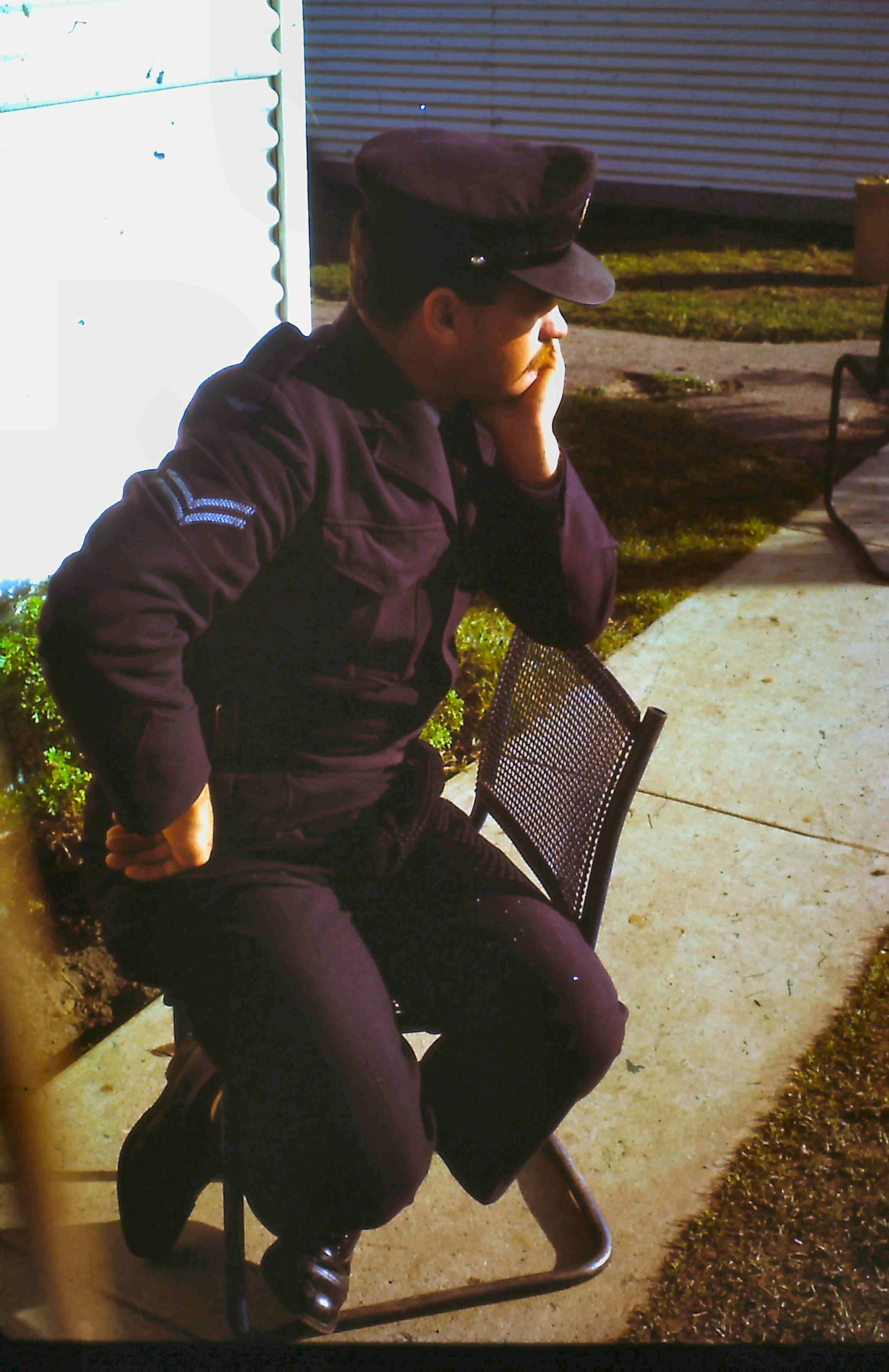
ADG, Bruce Main, 1963. Thinking, thinking!! |
|
|
Back Go to page: 1 2 3 4 5 6 7 8 9 10 11 12 13 14 15 16 17 18 19 20 Forward
|
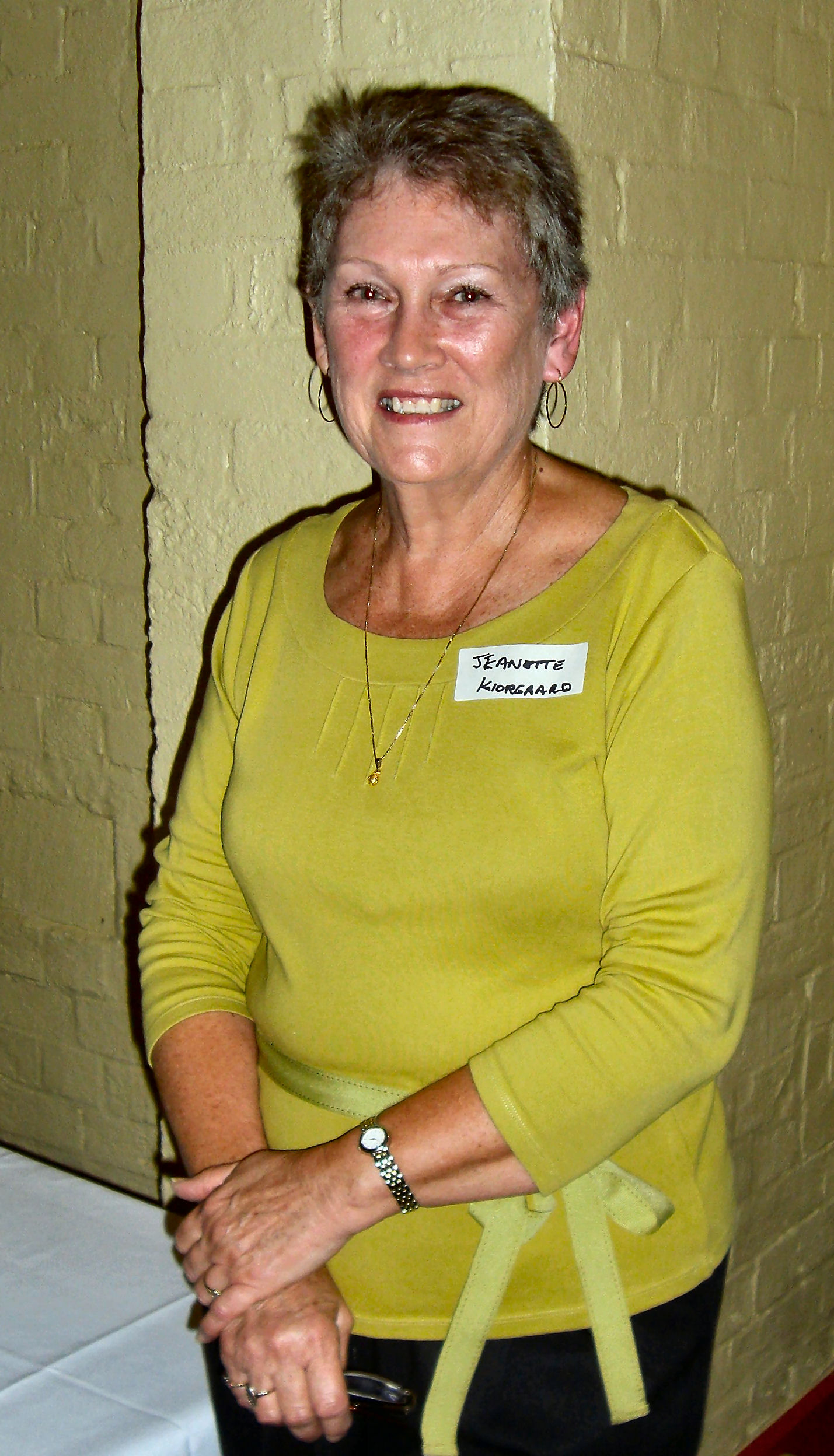



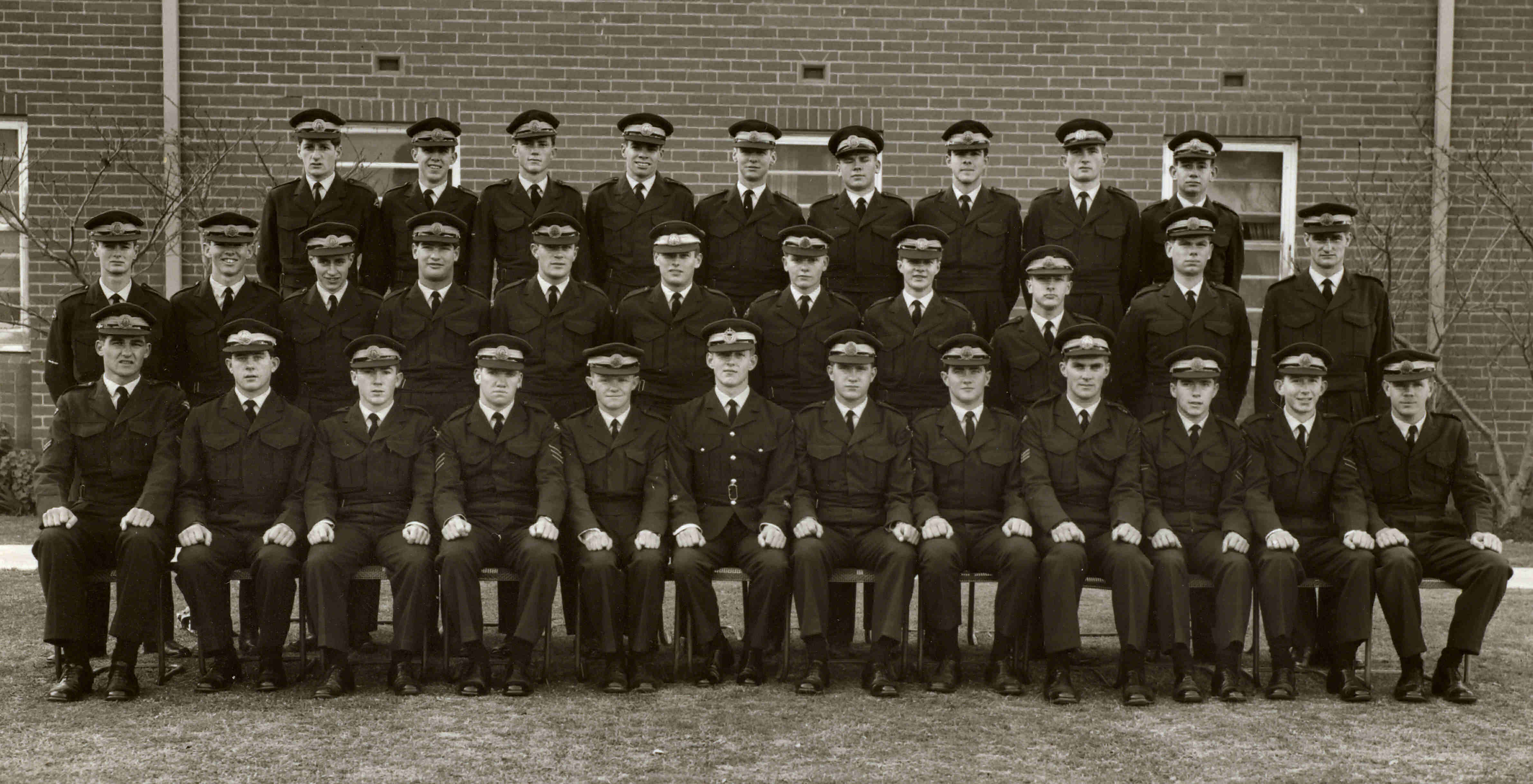
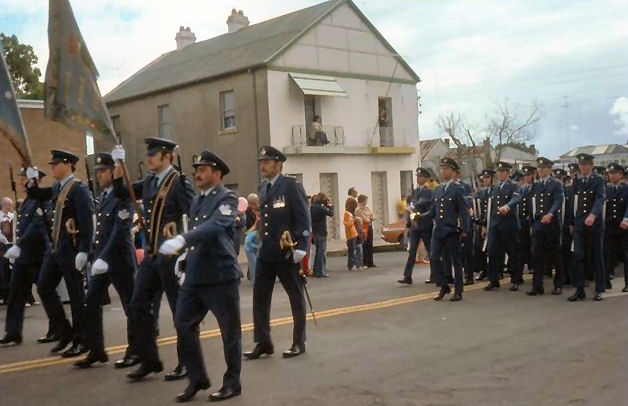
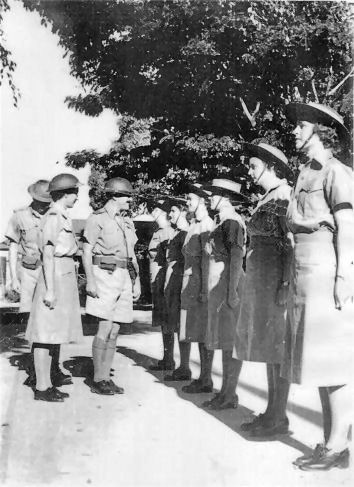 ,
living under primitive conditions. The operations room was located in an
isolated area near Stuart. This was a remarkable building, camouflaged
as a farm-house, and inside furnished most impressively with all the
sophisticated equipment necessary to a first class intelligence
establishment. There were D/F and teleprinters, scrambler phones,
plotting tables and dozens of radio sets.
,
living under primitive conditions. The operations room was located in an
isolated area near Stuart. This was a remarkable building, camouflaged
as a farm-house, and inside furnished most impressively with all the
sophisticated equipment necessary to a first class intelligence
establishment. There were D/F and teleprinters, scrambler phones,
plotting tables and dozens of radio sets.